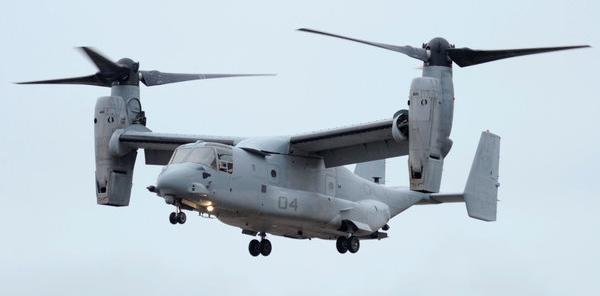Hello.
The evolution from the Chinook to the Osprey shows the differences.
The second focuses on the horizontal flight at high speeds, keeping the ability for vertical take-off and landing. Compare the fuel efficiency, the top speed and the range of the Chinook with those of the Osprey.
Chinook (Boeing CH-47):
a pair of counter-rotating propellers of 18.3m diameter each,
a pair of engines providing 4,733 bhp each,
a maximum take-off weight of 22,680Kp,
a range of 741Km,
a maximum speed of 315Km/h.
Osprey (Bell Boeing V22):
a pair of counter-rotating propellers of 11.6m diameter each,
a pair of engines providing 6,150 bhp each,
a maximum take-off weight of 27,400Kp,
a range of 1,627Km,
a maximum speed of 509Km/h.

More than double range, almost double maximum speed, much smaller propellers and heavier "propeller disk loading" for the Osprey.
The Osprey V22 cannot auto-rotate. If both engines fail at small horizontal speed and low height, the Osprey cannot land safely.
They could keep the autorotation capability in expense of the horizontal flight, of the range, of the maximum speed, of the "mileage".
But what they wanted was an airplane having the capability to take-off and land vertically.
The PatATi Portable Flyer (25Kp total weight with the fuel, 100Kp with the pilot) can be seen as a scale-down Osprey V22. If combined with a wingsuit, it allows high-speed horizontal flights, low fuel consumption, long range and capability for vertical take-off and landing.

You can also see the PatATi Portable Flyer as a lightweight Peroxide JetPack (enjoy the youtube video at
https://m.youtube.com/watch?v=E81KQ7u3-7s ), having 1/3 of the weight of the JetPack, and being rid of the limitations that make the peroxide JetPack just an expensive toy (among others: less than 30 seconds total flying time).
Gyroplanes have their own limitations. I don't think there is a conspiracy to keep gyroplanes out of the game. Their characteristics limit their use.
And since the thread is about the two-stroke engines, the PatATi Opposed Piston has several innovations / unique characteristics.
I can explain them if there is interest.
Thanks
Manolis Pattakos


